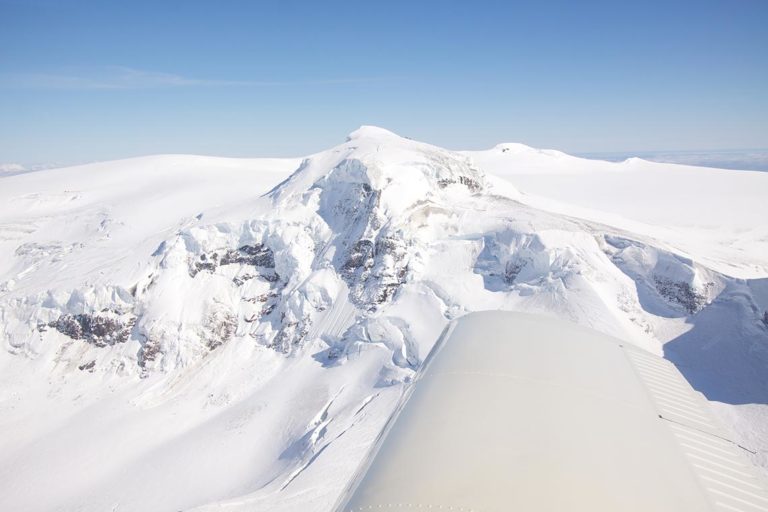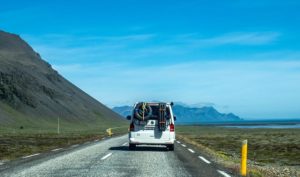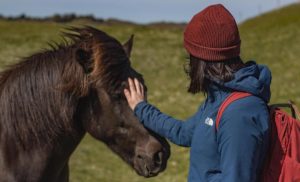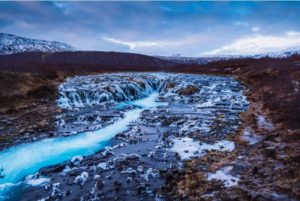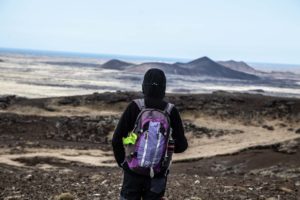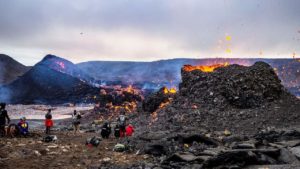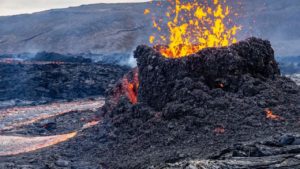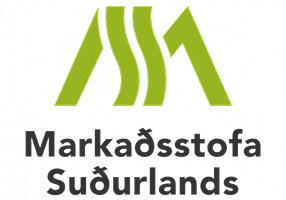Anyone who loves nature and walking in the mountains appreciates the opportunity to reach the highest peaks. What is “most” has the power of attraction like a magnet. It arouses interest and draws attention. Especially when we are talking about the highest mountains. Whether it’s a country, a continent, or even the world. No wonder that the Icelandic summit with a rather complicated name to pronounce and remember – Hvannadalshnúkur – is aimed at trekkers visiting the island. Especially that apart from that, Hvannadalshnúkur is breaking a few other records.
It is Iceland’s highest peak, measuring – according to measurements from 2005 – 2,110 meters above sea level. It has 65th place on the list of the highest peaks of the islands. It is also on the shortlist of one thousand five hundred European ultra prominent peaks, i.e. very visible peaks. This list shows peaks with a topographic convexity of 1500 meters or more (hence the short name P1500 (For example, the famous Matterhorn and Eiger peaks do not belong to this prestigious list because they are connected to other higher peaks and therefore not very visible topographically. is clearly visible from road 1 on the way to Viku The first conquerors of Hvannadalshnúkur were Hans Frisak from Norway in 1813, and later the Englishman Fr. W. Howell in 1891. Today the summit is open to everyone – of course under certain conditions – and why it is worth going, you will find out below.
It is situated in the mountain range of the Central Atlantic ridge, which makes it a volcanically active region. The last eruption in this place took place in 1727. The height of the peak changes slightly because it is located on a living glacier and a lot depends on the thickness of the ice sheet. But we will come back to the volcanological and geological value of this place.
The longest summit push on earth?
Considering the fact that the peaks in Iceland are basically reached from 0 above sea level. the ascent to the Hvannadalshnúkur summit is one of the longest peak attacks in the world. Usually we get it in one day – including the ascent and descent. This gives over 2,000 meters up “at a time” and about 25 kilometers, which requires quite a marathon endurance. However, knowing that we are reaching the summit that is not only the highest on the island but also one of the most unique in the world certainly helps. When choosing such a trip, you should prepare yourself for about 12-14 hours of walking.
It is worth knowing that, as it often happens in Iceland, despite its power, Hvannadalshnúkur is quite an accessible place. Apart from being in good shape, it does not require any special technical preparation and is not reserved only for experienced mountaineers. Therefore, it is worth trying, remembering, however, that we are moving on a glacier, so knowledge about the specifics of trekking in such a place is essential. So if you’re heading to Iceland’s highest peak, Hvannadalshnúkur, hiring a guide or buying a tour is definitely something to consider. Why is it so important? The glacier is covered with a mass of hidden crevices. Therefore, reaching the summit requires appropriate protection. The group moves together, “goose” and is tied with a rope. This is in case any of the participants fall into the crevice – then the rope acts as a springboard. It is forbidden to go to such a place alone and without proper knowledge about glacier trekking and possible rescue operations in crevices. Planning to climb Hvannadalshnúkur should therefore start by searching for a guided tour.
What’s more, professional tours with experienced guides often also allow you to rent the necessary equipment. So you don’t have to worry about not having a helmet, ice ax or harness. All this will help you organize the guide, you will also know exactly what to take and in what quantity. It is worth going on such a long and demanding trip with someone who has a lot of experience in this field.
Living geology under your feet
Hvannadalshnúkur is located in the Vatnajökull National Park and is one of the summit craters of Öræfajökull volcano. I mentioned earlier that I will say more about the geological aspect and now the time has come. Like many places in Iceland, here too, we are dealing with living geology and the work of the earth right under our feet. The opportunity to experience this may be another incentive to go to Hvannadalshnúkur.
The summit dome of Hvannadalshnúkur is nunatak, which in Greenlandic means “black rock”. It is, in short, a peak rising above the surface of the ice sheet, surrounded on all sides by an ice sheet. In aerial photos, such peaks actually look like black rocks, scattered over the snow-white field of the glacier.
Prior to the eruption in Geldingadalur, Öræfajökull was one of the contenders for the next Icelandic eruption. The eyes of the islanders, but also of all excited about the imminent volcanic eruption, turned towards Öræfajökull in 2017 and 2018, when a increased activity and changes in the volcano’s caldera. This activity was so great that in November 2017 it was decided to raise the Aviation Color Code to yellow, i.e. warning color. All this is due to the appearance of an ice caldera in the center of the crater and increased geothermal activity in the area. Similar behavior by Öræfajökull reappeared in April of the following year.
It was then that the media from around the world raised the alarm about the imminent danger of the “monster volcano” eruption. It is interesting because in the world media almost every Icelandic volcano preparing for an eruption (or showing any signs of anxiety) is called a “monster volcano”. In the case of Öræfajökull, however, the journalists are not too wrong. The history of previously known eruptions of this volcano shows that it can be really dangerous and deplorable.
First of all, Öræfajökull is a giant volcano for Iceland. In Europe, only two volcanoes – Etna and Beerenber – are higher than the Icelandic Öræfajökull, and only Mount Etna has a larger area. It is also the most powerful glacier in Iceland.
Öræfajökull eruptions are mainly explosive eruptions. During this type of eruption, lava is thrown violently into the air, and the volcano emits huge amounts of gases and pyroclastic materials. We saw a similar eruption in 2010 with the Eyjafjallajökull volcano. As we remember well, it was an eruption that temporarily paralyzed air traffic over Europe. Öræfajökull, however, is incomparably larger in this respect, and an explosive eruption from such a huge crater can have devastating consequences. Öræfajökull may be Iceland’s most violent volcano, according to volcano exploration site VolcanoDiscovery.com.
A monster volcano
We know of two Öræfajökull eruptions from historical times, i.e. those that we have documented. We know a lot about the eruption in 1362, which Orri Vésteinsson, a professor at the Háskoli Islands called “Pompeii in Iceland”. During it, so much Tephra was thrown into the air that it became completely dark over the region. The Litla-Hérað area was completely destroyed. Before the eruption, there were as many as 30 farms in this region that stretched between Morsádalur and Breiðumörk. In the Gottskálksannáll manuscript from the mid-16th century, written by Gottskálek Jónsson, a clergyman from Skagafjörður, we read: “In the Eastfjords, Knappafellsjökull exploded and ran on top of Lómagnúpssandur, killing everyone. The one in the East Fjords, called Úlfarsá, ran to a place called Rauðalæk, and broke down the whole place, so that only a house was left but the church ”.
The Öræfajökull eruption is a so-called pyroclastic eruption (called gusthlaup in Icelandic), during which not only huge amounts of tephra are thrown into the air, but it creates a kind of flood of hot air, solidified lava and gas at a speed of about 150 km / h . There is no way anyone or anything in the way of Gusthlaup will survive. Hence the name of the volcano – öræfi here means “wasteland”. Öræfajökull’s last eruption was in 1727 and was smaller than the previous one. Even so, one farm was swept away during the eruption and three people died.
From the top of Iceland
But don’t be worried. Today Öræfajökull is calm and its previous activities have returned to normal. Now, every year its summit attracts a lot of people willing to stand on the highest point of Iceland. From which, anyway, there are beautiful views that reward the effort of the climb. There are so many reasons to go there – I hope I have proved it – that if you love mountains you should put Hvannadalshnúkur on your “must do” list.

